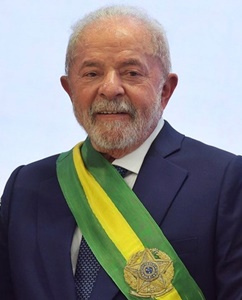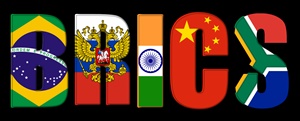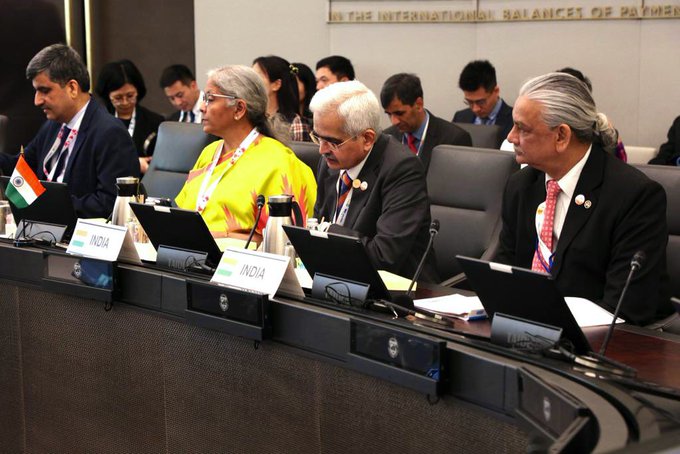
India’s Finance Minister Nirmala Sitharaman at the BRICS Finance Ministers and Central Bank Governors meeting in Washington, D.C. Photo: Twitter @nirmalasitharaman retweet of April 12, 2023 from Indian Ministry of Finance
The U.S. and its Western allies should take the pomp and posturing at this week’s BRICS summit in Johannesburg with a shaker’s worth of salt.
Sure, that “bloc” – Brazil, Russia, India, China and South Africa – represents more than 40% of the world’s population, and other countries in the Global South may yet join. The BRICS also like to present themselves as a sort of non- or anti-West geopolitical alternative to U.S. hegemony. But they’re not, and never will be.
For starters, it’s always a stretch when you launch something – a policy, institution, group or club – just because somebody came up with a great acronym. And that’s exactly how BRIC (later BRICS) began. Jim O’Neill coined the term in 2001 when he was an economist at Goldman Sachs and needed a snappy moniker for several markets that looked promising for investors but otherwise had nothing obvious in common.
The BRICS adopted the label because it fit two trends: the acronym vogue but also the fad for blocs. The latter, I think, came out of the progression from a bipolar world during the Cold War to a unipolar moment of U.S. hegemony and the presumptive return to multipolarity since then. In this more complicated world, countries assume they should belong to some sort of coalition, maybe several.
Today there’s a bewildering array of blocs to choose from. Just take Africa. The continent has (I won’t spell out the abbreviations) an AMU, Comesa, CEN SAD, EAC, Eccas, Ecowas and a few more, not to mention the African Union. That word “union,” in fact, is especially popular for blocs because it stipulates unity where there usually is none.
That’s true even for the European Union, which comes closest to being a true bloc, in the sense of confederation. In trade and regulation, the E.U. is a world power. In everything else, though, it’s a chaos club of nations that can’t agree on much, and that certainly couldn’t stand up to the world’s major powers in a pinch.
The rest of the world’s blocs have much less to offer. Latin America, for example, makes a sporting effort, with a SICA, Caricom, Mercosur and what not. And whenever one fizzles out, such as USAN (the Union of South American Nations), another takes its place, currently Prosur, the Forum for the Progress of South America. Don’t hold your breath.
Among all these aspiring confederates, the BRICS arguably have the least in common, aside from a dislike of U.S. clout in global finance, economics and geopolitics. They consist of three democracies in different stages of backsliding and two increasingly repressive autocracies. One pair, China and India, is as likely to fight each other as to cooperate. That’s quite different from, say, the G-7 (Group of Seven), a club of rich liberal democracies with a shared sense of custodianship for the world economy.
One thing all blocs, unions and forums excel at is generating paperwork. The E.U. clinches the title in this category, with either ten or eleven presidencies, depending on the count. But even lesser blocs boast their secretariats, rotating chairs and associated other bureaucracies. The BRICS, for example, launched the New Development Bank, a lender meant to duplicate the World Bank (again, because the latter is in Washington).
When blocs reach for loftier goals, though, they involuntarily become fodder for satirists. The BRICS have floated the idea of a joint currency – the better to topple the hated U.S. dollar from its global perch. But only one bloc, the E.U., has ever achieved monetary union, and even that at the cost of recurring near-death experiences. The notion that the BRICS would pool their money, central banks, fiscal and monetary policy is, as O’Neill the nomenclator puts it, “ridiculous.”
In reality, each of the five BRICS is in it for different reasons. Take China. It wants to displace the U.S. as a hegemon and keeps seeding blocs it thinks it can dominate for that purpose. Those include the Belt and Road Initiative, a transcontinental infrastructure program, the Shanghai Cooperation Organization, a Eurasian grouping, and the tellingly named 16+1 (formerly 17+1), a format in which China allegedly cooperates with Central and Eastern European countries. As the Europeans in that club have figured out, though, the +1 really just wanted to boss around the 16.
Given the aims of the C in BRICS, neither the B, R, I or S nor other countries that have expressed an interest in joining, such as Indonesia, can really be enthusiastic about becoming Beijing’s vassals just to teach Washington a lesson. That’s one reason the forum will struggle to project soft power, much less hard.
Another reason is the company it’s forced to keep. It never helps a club when one member can’t show up because the International Criminal Court has a warrant out for their arrest. In this case, that’s Russian President Vladimir Putin, facing war crimes charges for allegedly deporting children from occupied areas of Ukraine, who’ll participate via video link to avoid being handcuffed on arrival in Johannesburg.
How the hosts curate that delicate situation, and whether everyone in the room keeps a straight face, including Putin’s foreign minister, will be worth watching. But a new world order will be nowhere to be seen.
This column does not necessarily reflect the opinion of the editorial board or Bloomberg LP and its owners.Andreas Kluth is a Bloomberg Opinion columnist covering U.S. diplomacy, national security and geopolitics. A former editor in chief of Handelsblatt Global and a writer for the Economist, he is author of “Hannibal and Me.”
The BRICS are neither the anti-West nor a bloc
 This was now used to transport stones to build the third layer. This process was repeated 209 times till the pyramid was finished. Then, starting from the top, the highest level of the ramp was removed, and the missing stones of level 209 were put into place to finish this level,” he added. “This reverse process of ramp removal and placement of missing stones was repeated 209 times ending in the lowest level being completed last. Because the ramp used is not an exterior ramp, nor an interior one, it is an ‘L Notch Ramp’ since it is built like a cut-out notch within the footprint of each layer of stones.”Hooda proposed that the ancient Egyptians likely used a dual “L Notch Ramp,” system for pyramid construction, with one ramp for moving stones upward and a smaller ramp for workers to descend. This method, which left no visible traces after the ramps were dismantled, helps explain the long-standing mystery of Egyptian pyramids logistics.His painstaking research also highlights evidence of this approach, such as the smaller stones used at the pyramid’s higher levels—a design compromise necessitated by the L Notch Ramp system. It also identifies eight interlocking components that form an integrated explanation for the construction, providing comprehensive proof of the method.
This was now used to transport stones to build the third layer. This process was repeated 209 times till the pyramid was finished. Then, starting from the top, the highest level of the ramp was removed, and the missing stones of level 209 were put into place to finish this level,” he added. “This reverse process of ramp removal and placement of missing stones was repeated 209 times ending in the lowest level being completed last. Because the ramp used is not an exterior ramp, nor an interior one, it is an ‘L Notch Ramp’ since it is built like a cut-out notch within the footprint of each layer of stones.”Hooda proposed that the ancient Egyptians likely used a dual “L Notch Ramp,” system for pyramid construction, with one ramp for moving stones upward and a smaller ramp for workers to descend. This method, which left no visible traces after the ramps were dismantled, helps explain the long-standing mystery of Egyptian pyramids logistics.His painstaking research also highlights evidence of this approach, such as the smaller stones used at the pyramid’s higher levels—a design compromise necessitated by the L Notch Ramp system. It also identifies eight interlocking components that form an integrated explanation for the construction, providing comprehensive proof of the method.
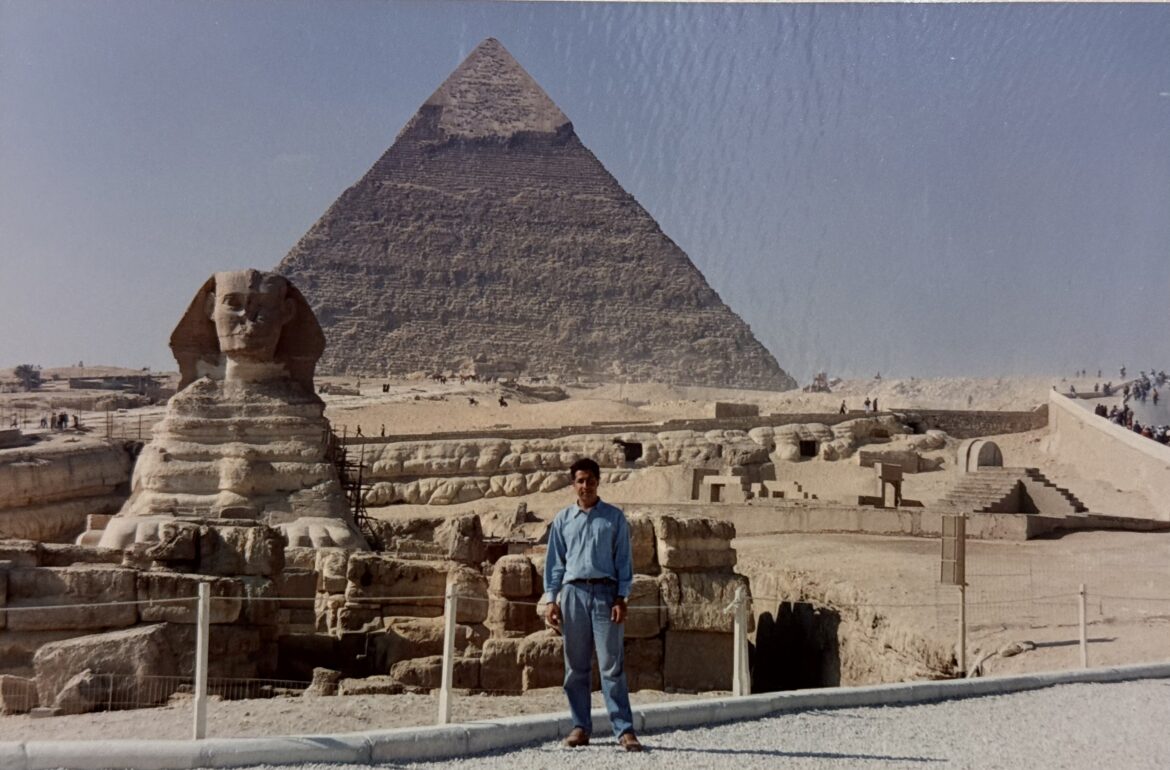
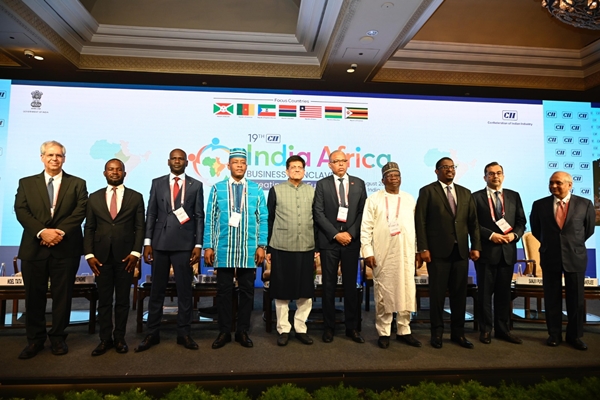
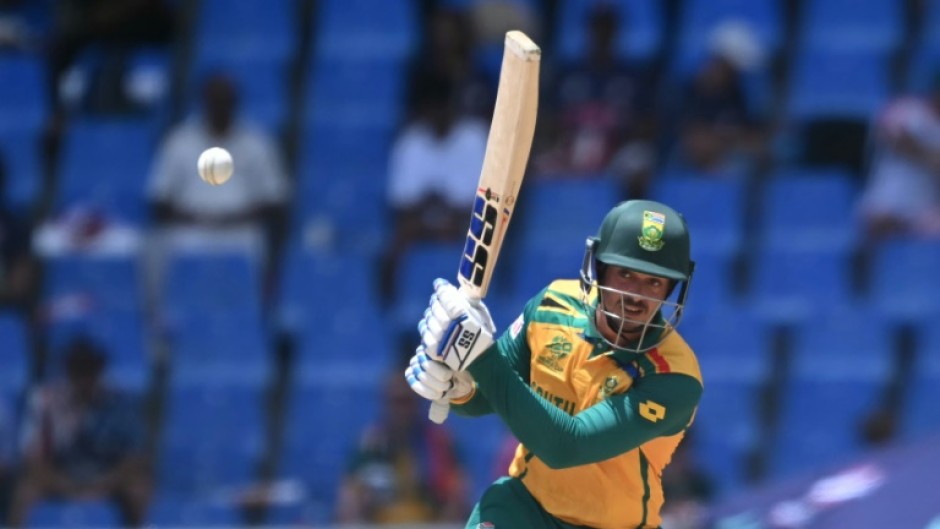


.jpg?ext=.jpg)



